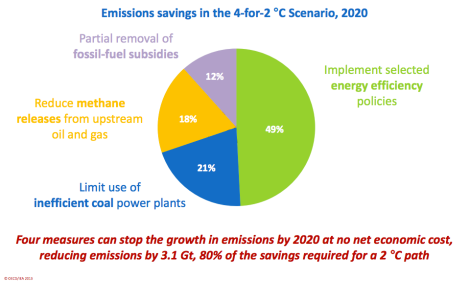
ShutterstockTake the off-ramp, please!
The world is driving itself into a future of climate hell, but experts say it’s not too late to take the off-ramp.
Despite declining greenhouse gas emissions in the U.S. and other developed nations, global emissions broke a new record last year. They were pushed 1.4 percent higher than the year before by rapid growth in China and India, and by Japan turning to fossil fuels instead of nuclear power.
During U.N. climate negotiations held in Copenhagen in 2009, most of the world agreed to aim for a post-Industrial Revolution temperature rise of no more than 2 degrees Celsius. But if the world keeps traveling along its current path, the International Energy Agency warns in a new report that long-term average temperature increases of between 3.6 and 5.3 degrees C are more likely.
Climate negotiations are underway to agree on a successor to the Kyoto Protocol, which could help stem the tide of rising emissions. But no new agreement is expected to come into force until 2020 — and who knows if it would even be strong enough to make a difference.
So it would be easy to conclude that we’re royally fucked.
But in its new report, the IEA outlines four strategies that countries could pursue during the next seven years to help spare us the “royally fucked” scenario of skyrocketing temperatures — all at zero net economic cost.
“Despite the insufficiency of global action to date, limiting the global temperature rise to 2 °C remains still technically feasible, though it is extremely challenging,” states the report, titled “Redrawing the Energy-Climate Map.”
The most fruitful of the four suggested strategies would be the adoption of straightforward energy-efficiency measures, mostly in buildings but also in vehicles. The other strategies: shutting down the worst of coal power plants, cutting back on the accidental release of natural gas by frackers and other energy companies, and more quickly phasing out fossil fuel subsidies.
“[T]hese policies would reduce greenhouse-gas emissions by 3.1 [gigatonnes of carbon dioxide or equivalent] in 2020 — 80% of the emissions reductions required under a 2°C trajectory,” the report says. “This would buy precious time while international climate negotiations continue.”
Here are those four suggestions in graph form from a related IEA presentation [PDF] given in London on Monday. The percentage figures indicate each strategy’s potential contribution to the 3.1 Gt reduction:
Christiana Figueres, executive secretary of the United Nations Framework Convention on Climate Change, which is coordinating climate negotiations, said governments and companies should seize on the report’s recommendations.
“Once again we are reminded that there is a gap between current efforts and the engagement necessary to keep the world below a two degrees Celsius temperature rise,” Figueres said in a statement [PDF]. “Once again we are reminded that the gap can be closed this decade, using proven technologies and known policies, and without harming economic growth in any region of the world.”



